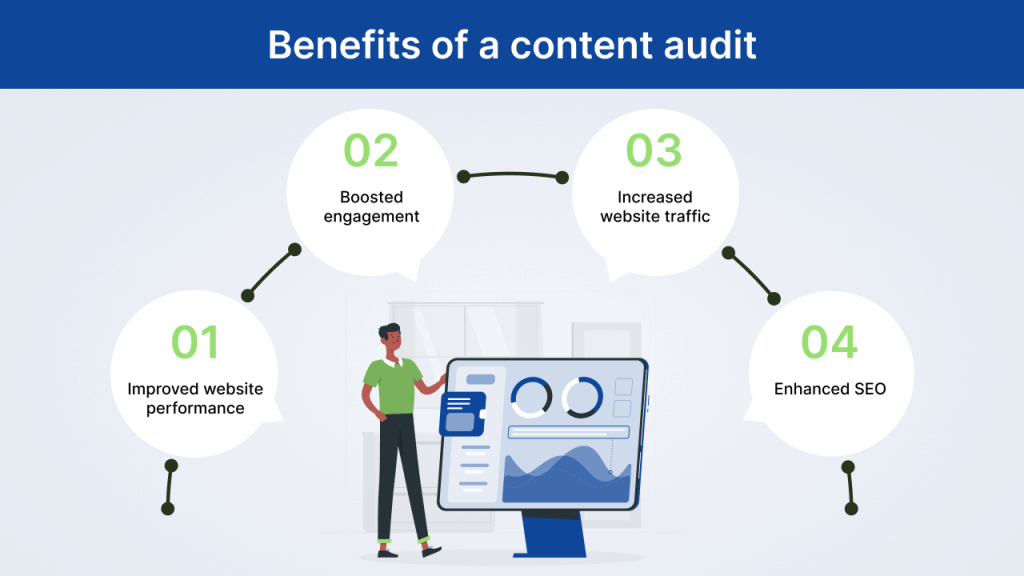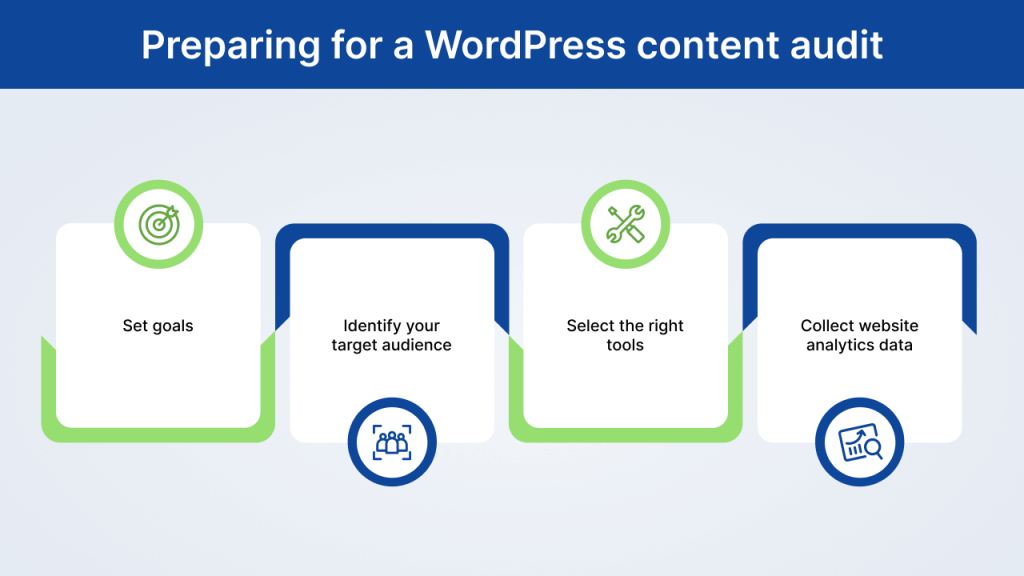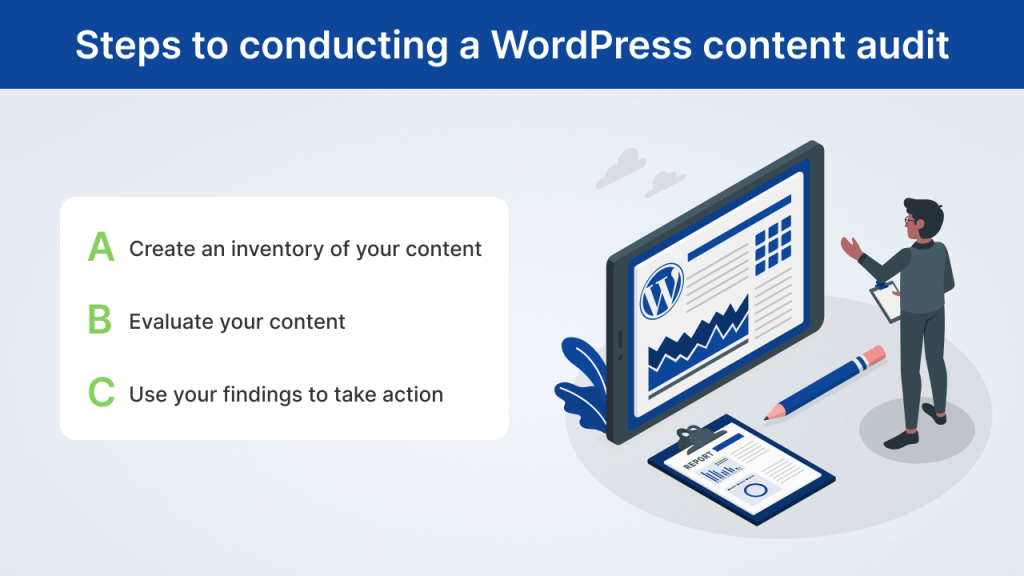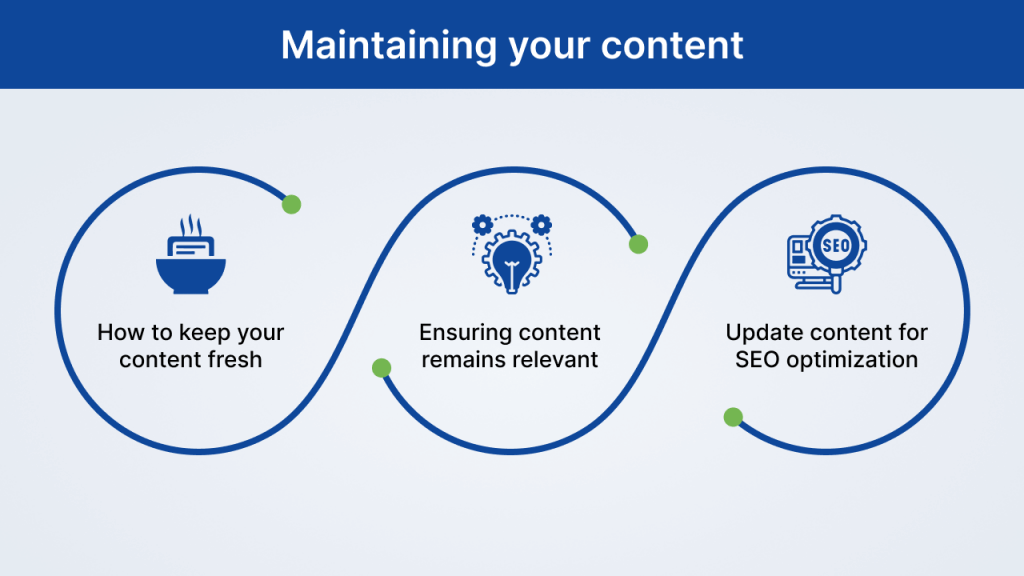A WordPress content audit is the process of evaluating your website or blog content to determine its relevancy, quality, and performance after a period of time. By performing a content audit, you can identify gaps in your content strategy, improve your SEO and user experience (UX), and optimize your overall content marketing efforts. In this detailed guide, we’ll discuss the importance of conducting a content audit and how to do it effectively.
[For performing content audit that is solely focussed on SEO, then check out my other post – WordPress SEO content audit ]

Are you struggling to generate traffic, engagement, and quality leads through your website? It may be time to take a closer look at your website content. Conducting a WordPress content audit can help you identify areas for improvement and optimize your website for maximum performance. In this guide, we’ll cover everything you need to know to conduct a successful content audit for your website.
Audit Basics
The basics and goal of any audit should be to:
Decide
- if the entity can continue on its “as is” form or needs alterations to align to your business goals
- if the entity can continue on its “as is” form or needs to be removed.
Take action
- assign ownership on the action items
- implement the actions decided on the first step to make the audit succesful.
WordPress content audit basics
Before we dive into the meat of this guide, it’s essential to understand the basics of a content audit. Conducting a content audit involves examining all the content on your website or blog, categorizing it, and assessing it for its value, relevance, and performance.
A content audit helps you to understand by getting answers to some of the key questions about your content strategy, such as:
- What kind of information your audience wants and how engaging your current content is?
- Are the users getting other relevant secondary information from the website?
- Is the website user-friendly and some keys metrics like bounce rates are above or below average?
Plan for a regular content audit for your WordPress website, once every month or a quarter based on the volume of content on your website and other reasons unique to your website.

Benefits of a content audit
A content audit offers significant benefits to your website or blog. Here are some benefits you can expect:
Improved website performance
A content audit will help you to identify gaps in your content that can harm your website’s performance. You can then remediate the gaps by fixing them or removing it to improve overall performance and results.
Boosted engagement
By examining your content, you can understand your audience’s preferences and tailor your content strategy to their needs. Your audience is more likely to engage with your content, leading to better engagement rates.
Increased website traffic
A content audit helps you improve your website SEO scores and perform better in search engines. This is done by identifying your underperforming content and content that needs periodical updating.
Enhanced SEO
By identifying keyword gaps in your content strategy and improving your content structure and organization, you can boost your website’s SEO score.

Preparing for a WordPress content audit
Before conducting a content audit, you need to prepare for it. Here are a few things you should keep in mind:
Set goals
Be clear about the goals you want to achieve through your content audit, such as improving traffic generation, conversion, UX, and engagement rates. Make sure to focus on one key area for the audit
Identify your target audience
Identifying your target audience is essential to creating relevant content. A thorough understanding of your audience will help you identify gaps in your content strategy.
Select the right tools
There are several tools available on the market that can help you conduct a content audit, such as Google Analytics and SEMrush. Select the right tools to help you gather the information you need. Also Google’s free tool Site manager gives a ton of information about what pages from your site is performing well in search engines, which can give you an idea of the important pages in your site that needs to be top on your content audit.
Collect website analytics data
Collecting data on how your website is performing is essential to understanding where you need to make changes. Review the data that is collected on website traffic, bounce rates, user engagement, and other relevant metrics. Stress more on the key indicators like bounce rates, exit rates and conversions rather than raw numbers like page views and traffic.

Steps to conducting a WordPress content audit
Now that you understand the basics of a content audit let’s go through the steps you need to take to conduct one:
A. Create an inventory of your content
Start by creating a comprehensive inventory of all the content on your website or blog. Collect a list of all unique URLs and categorize each URL by content type. Collect important metadata for each URL, such as page title, description, and keywords. Examine content for organization and structure.
B. Evaluate your content
Next, evaluate your content based on various factors like quality, engagement, traffic generated, SEO optimization, performance, and readability.
Quality of content
Ensure that the content is up to par and provides value to the reader. Analyze if the content is informative, actionable, and visually appealing, among other aspects. Constantly update your content for improving readability
Engagement levels
Examine the engagement levels of your website content through social media shares, comments, and other metrics. Focus on content that has a higher engagement rate. Free tools like Sharedcount.com gives you details about the total shares on popular social media sites for any page
Traffic generated
Identify the content that generates the most traffic and focus on optimizing it further. Analyze the content that is underperforming and consider removing it. Google analytics or any analytics tools along with Google Site manager tool can help with the detailed traffic stats of your pages
SEO optimization
Ensure that all content is optimized for search engines. Analyze the keywords used, the relevance to your target audience, and how well the content ranks.
Check my post on SEO content audit deep dive for WordPress
Performance
Evaluate your website’s performance by analyzing website analytics data and identifying underperforming content pages. This analysis can inform where to make changes to optimize performance.
Readability
Make sure your content is easy to read, providing a good user experience for your audience. Analyze things like H1, H2, H3 titles, paragraph length, sentence readability, and font size, among other things.
C. Use your findings to take action
Based on your findings, it’s time to reorganize, update, or remove content that isn’t performing. Use the findings to inform a new content strategy and improve your website’s positioning.
Reorganize your website content
Think about updating the content of different pages as needed. Work on updating pages with design or formatting issues, improving the content through better visuals, reordering, or removing outdated material.
Remove outdated content
Identify the content that is outdated or irrelevant, and remove it from your website. Removing such content can help your website perform better and create a better user experience.
Update older content
Updating older content can help improve its relevance and SEO optimization. Example a blog post with an year name in the tile, needs to be revisited every year so that it stays relevant and fresh. A blog post on news needs to be updated with links to other posts that current information about the news.
Add new content that fills gaps
Identify any gaps in your content strategy and create new, more relevant content to fill these gaps.
Focus on keyword mapping
Create a strategy for how keywords should be used within your website. Ensure that all website metadata uses targeted keywords. When you focus, make sure you only have the most important keywords being used and mapped throughout the website

Maintaining your content
Finally, it’s essential to maintain your content regularly to ensure it remains relevant and optimized:
Keep your content fresh
Keep updating your content frequently to provide a better and udpated information to your users.
Ensuring content remains relevant
Continuously evaluate your content to ensure it’s still serving its intended purpose.
Update content for SEO optimization
Keep updating your content’s SEO to optimize it for search engines.
Conclusion
In conclusion, a WordPress content audit is an essential process that helps you improve your website’s performance, traffic, visitor engagement rates, and SEO optimization. Conduct regular content audits to keep your website competitive, relevant to your industry, and optimized for your target audience.
10 key takeaways
- Regular content audits are essential for maintaining a high performing website.
- Aim to create engaging content that resonates with your target audience.
- Focus on optimizing metadata and website structure for maximum UX and performance.
- Ensure that website content remains relevant and updated frequently.
- Effective content promotion tactics include influencers, social media and email marketing.
- Remove outdated or irrelevant content from your website as needed.
- Work on updating older content to increase its relevance and SEO optimization.
- Focus on keyword mapping strategies to optimize website metadata.
- Stay current with industry trends to keep your website and content competitive and compare your website Key Parameter Indicators (KPIs) with the industry benchmarks.
- Continuously evaluate your content to ensure it is still serving its intended purpose.